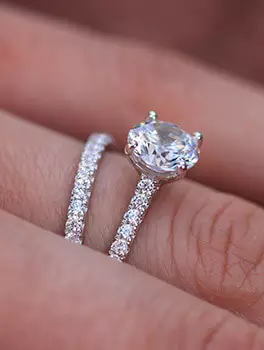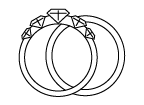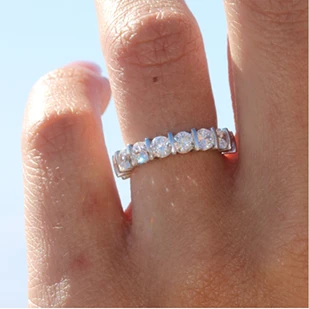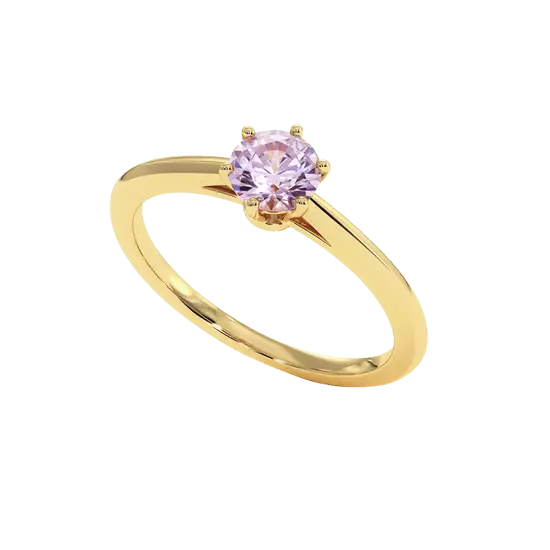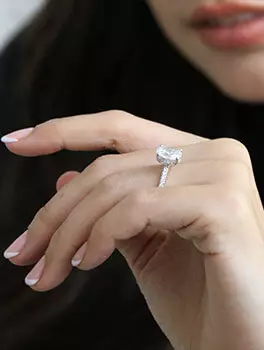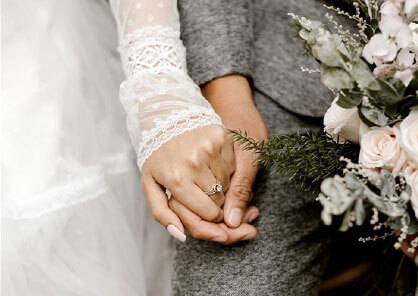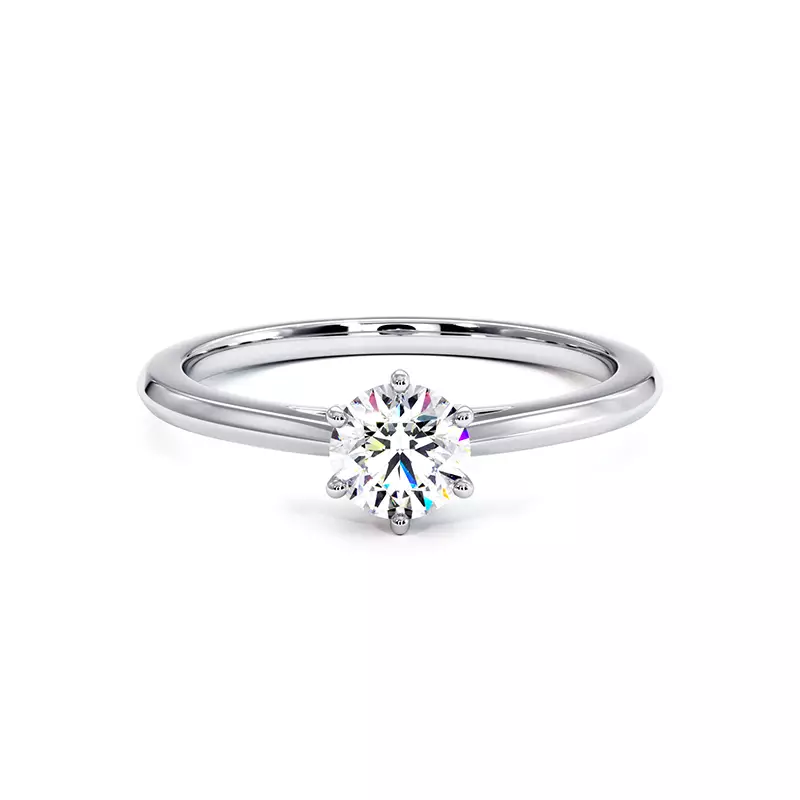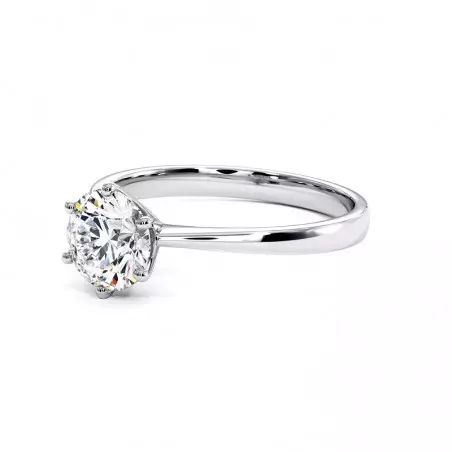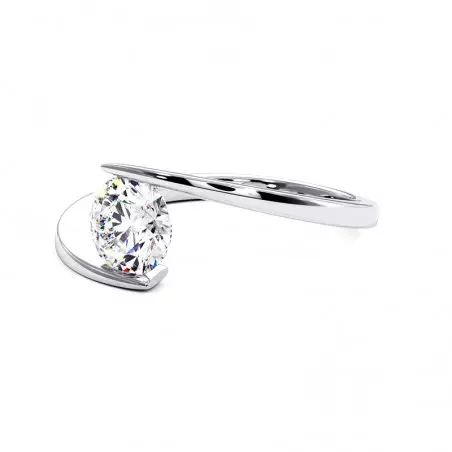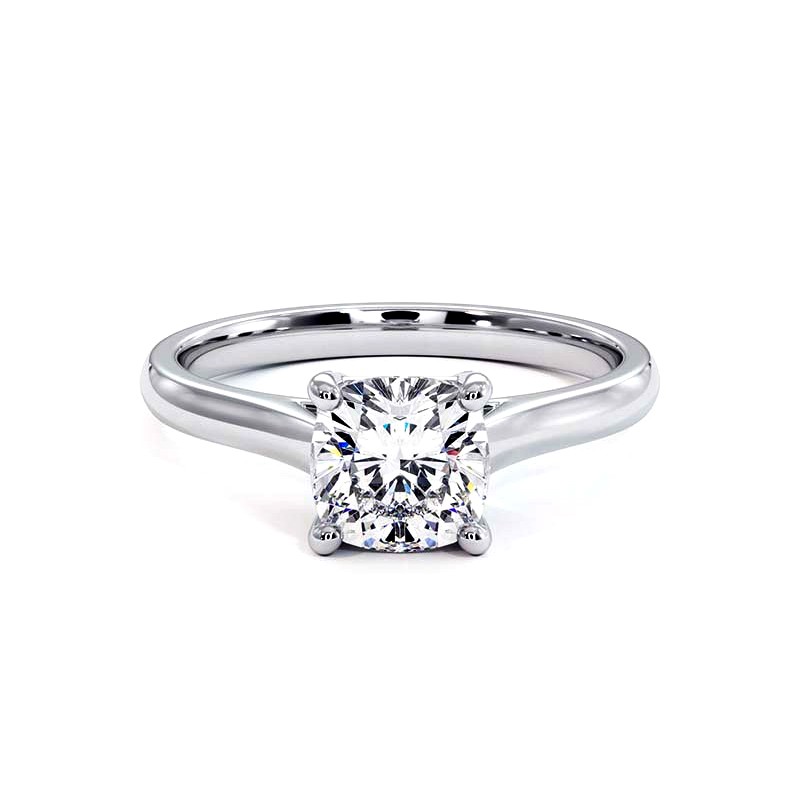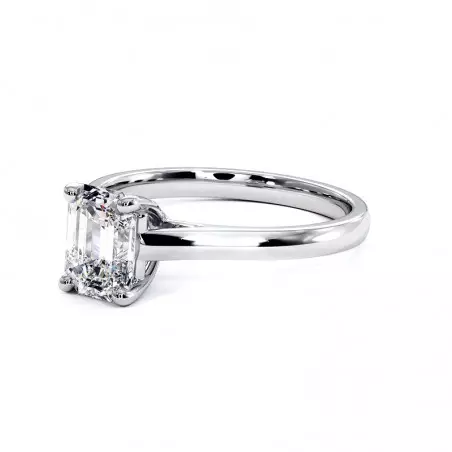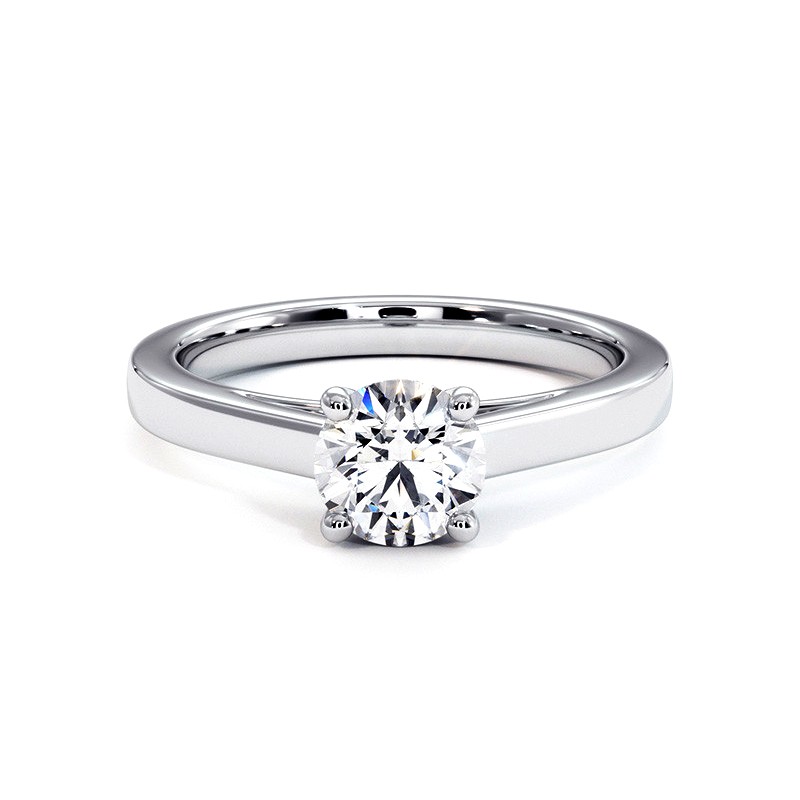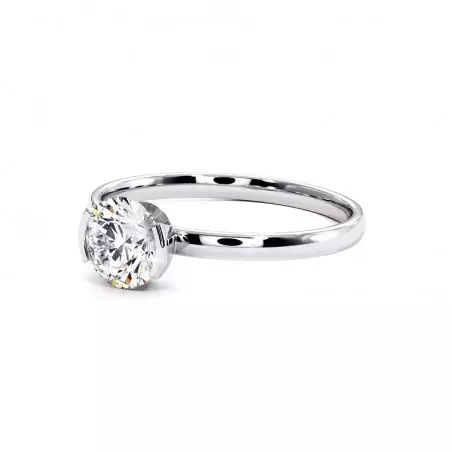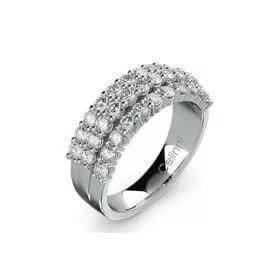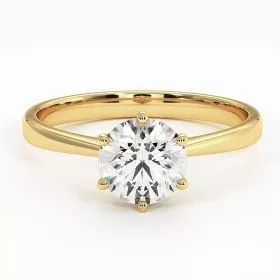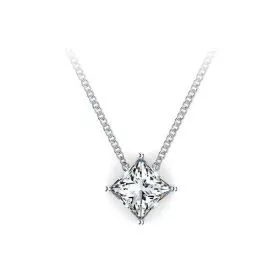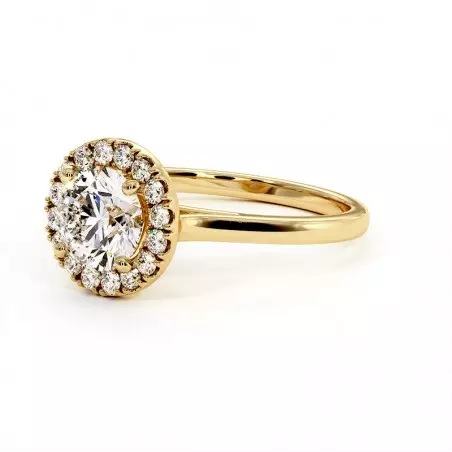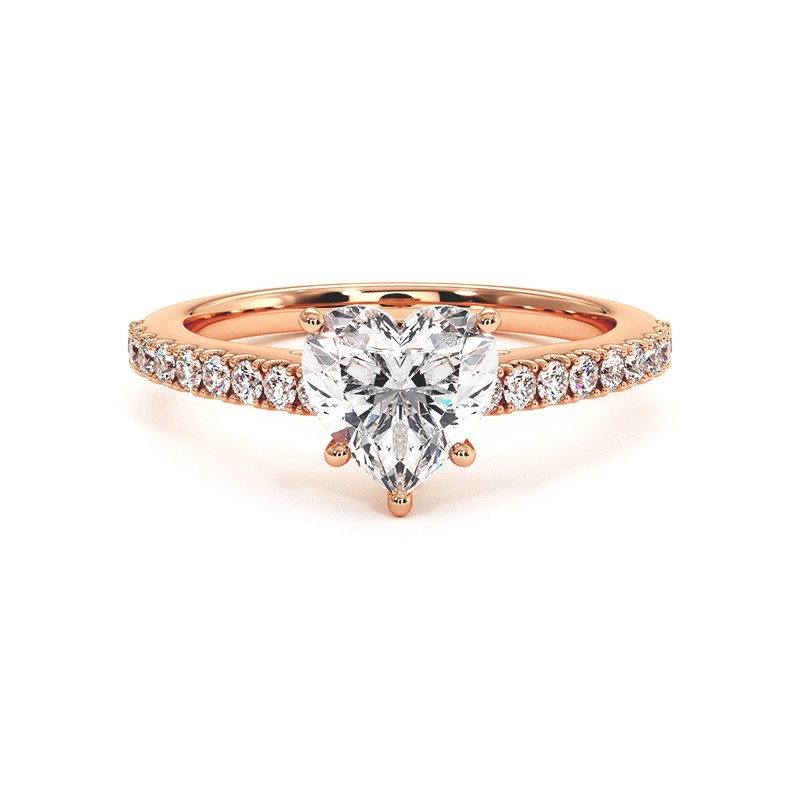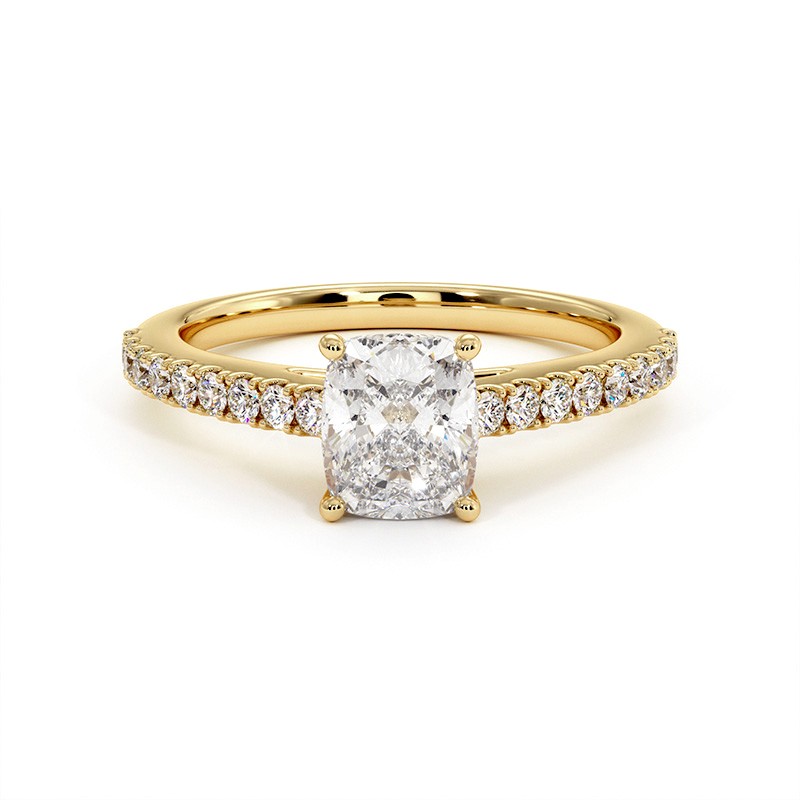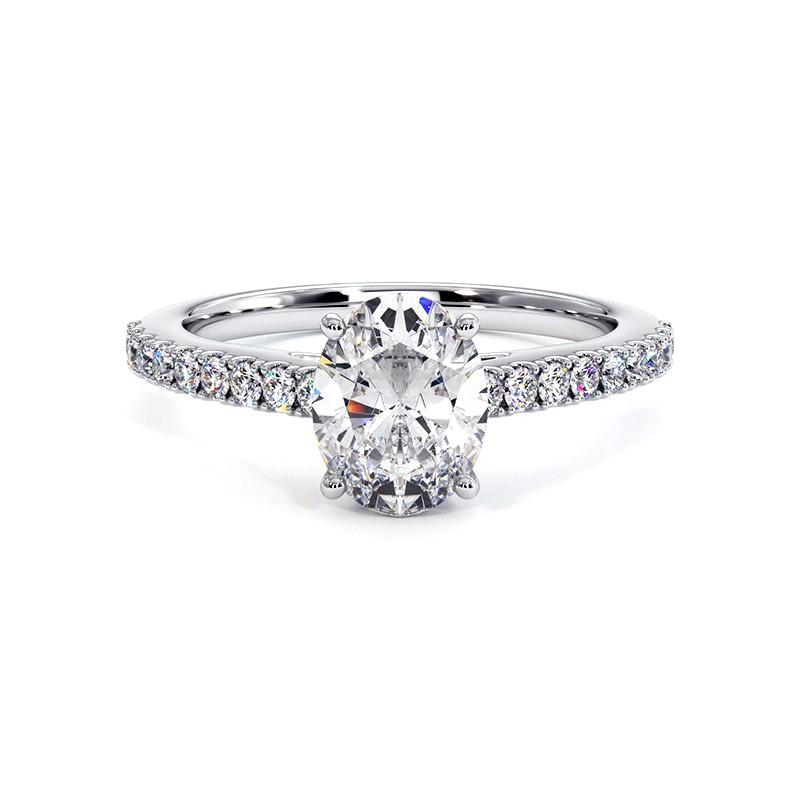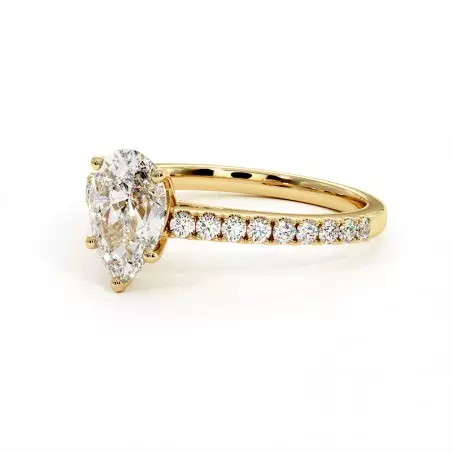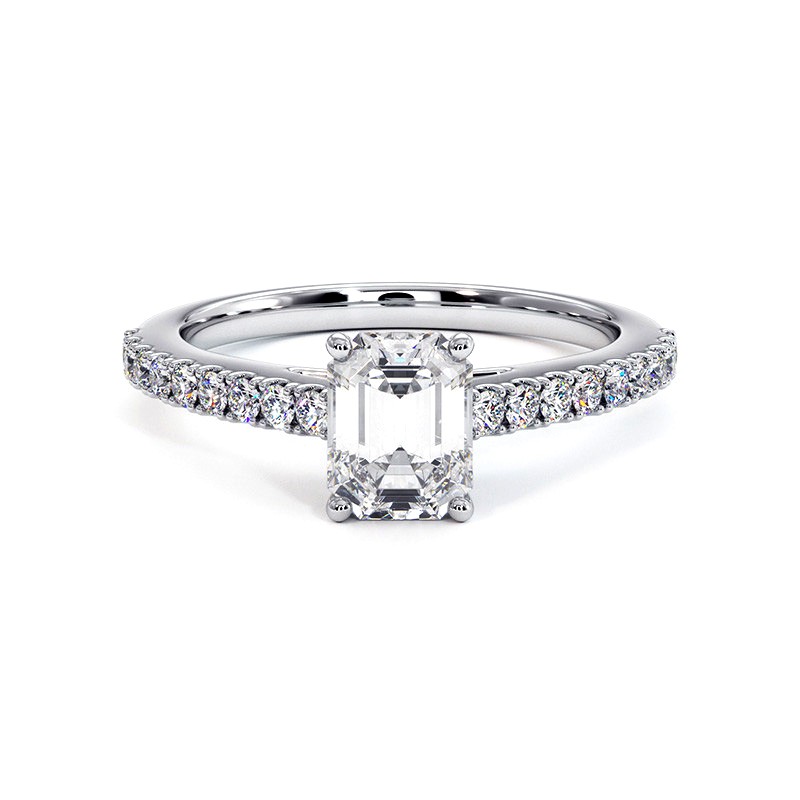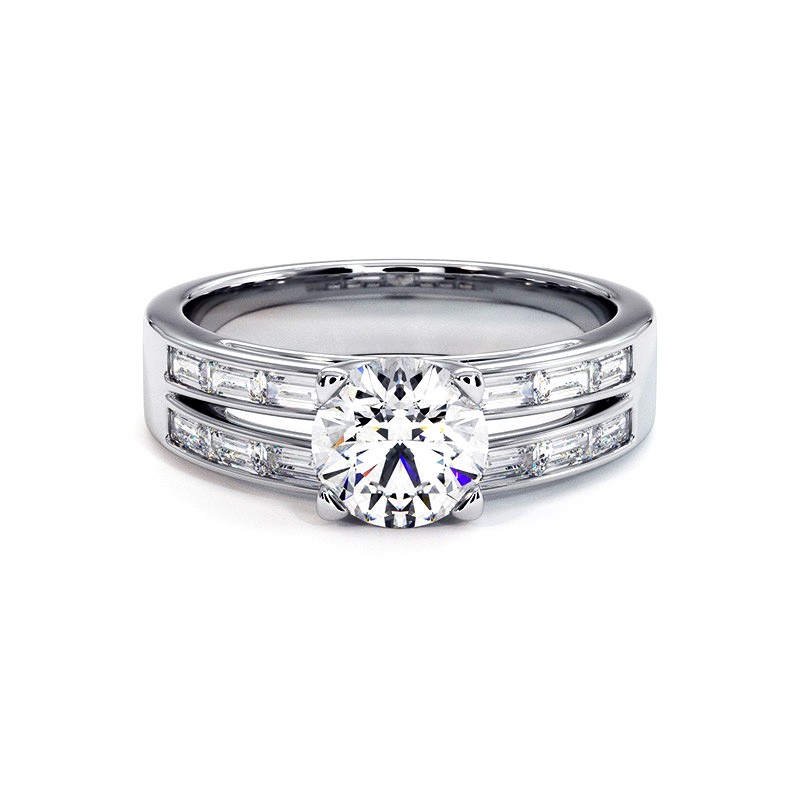Which hand for an engagement ring?
 ,
Know your jewelry
,
Know your jewelry

Offering an engagement ring is one of the most symbolic gestures in a couple’s life. It represents love, the promise of a shared future, and a deep commitment between two people. But when the time comes to wear it, one question often arises: which hand should you wear an engagement ring on?
Should it be placed on the left hand or the right? And above all, which finger should hold the engagement ring according to tradition?
Every culture, every era, and even every couple has its own interpretation of this ritual. In this article, Maison Celinni, diamond experts since 1967, unveils the origins, symbolism and traditions surrounding the engagement ring, to help you better understand the meaning of this deeply emotional piece of jewelry.
The Origins of the Engagement Ring
Long before becoming a modern symbol of love, the engagement ring traces its roots back to Antiquity.
The Egyptians were among the first to exchange rings braided from reed or hemp, representing an eternal bond between two souls. Later, the Romans adopted iron rings as a symbol of strength and loyalty, used to seal a marriage contract.
During the Middle Ages, the ring became a token of honor: noble families used it to officially confirm a promise of union. It was in the 15th century that the diamond made its appearance in engagement rings, when Archduke Maximilian of Austria offered Mary of Burgundy a ring adorned with diamonds arranged in the shape of the letter “M”. This gesture marked history: the diamond engagement ring became the ultimate symbol of eternal love.
Since then, this precious jewel has evolved through the centuries without ever losing its significance. Even today, whether it’s a classic women’s engagement ring or a bespoke creation, it embodies the purity of emotions and the promise of a lasting commitment.
Tradition and Symbolism
An engagement ring is far more than a simple piece of jewelry—it is a universal language. Its circular shape, without beginning or end, symbolizes eternity, perfection, and an unbreakable union.
In Western tradition, it is typically worn on the left ring finger. According to an ancient belief dating back to Antiquity, a vein—the vena amoris, or “vein of love”—runs directly from this finger to the heart. Wearing the engagement ring on this finger is therefore a way of keeping love as close as possible.
But customs vary across cultures: in some Eastern or Northern European countries, wearing the engagement ring on the right hand signifies loyalty and strength, while in Latin countries, the left hand symbolizes tenderness and passion.
Whether worn on the right or left, the essential message remains the same: a sincere and lasting promise of love.
At Celinni, every engagement ring is designed to stand the test of time, blending tradition, elegance, and fine jewelry craftsmanship. Whether set with a classic solitaire diamond, a sparkling halo, or tailored through bespoke creation, each ring becomes the unique reflection of your story.
Which Hand and Which Finger for an Engagement Ring?
Choosing which hand to wear your engagement ring on depends primarily on culture, religion, and sometimes even family tradition. While the left hand is the most common in many countries, certain regions favor the right hand for symbolic or religious reasons.
Each custom tells a story, yet all convey the same message: sincere love and deep commitment.
France, Belgium, Switzerland and Morocco – The Left Hand
In most Latin and French-speaking countries, the engagement ring is worn on the left hand, on the ring finger.
This tradition dates back to Antiquity, when Romans believed that a vein—the vena amoris—connected this finger directly to the heart. Wearing the engagement ring on this finger therefore symbolized the direct link between love and the heart.
In France, Belgium, French-speaking Switzerland and Morocco, this tradition remains firmly rooted. On the wedding day, the engagement ring is sometimes moved to the right hand for the ceremony, then placed back on the left hand beside the wedding band.
At Celinni, every creation is designed for comfortable wear on the left ring finger, whether it is a classic solitaire, a halo ring, or a bespoke design.
Germany, Austria and Nordic Countries – The Right Hand
In several Central and Northern European countries, wearing the engagement ring on the right hand is the norm.
This custom stems from Protestant and Orthodox traditions, where the right hand symbolizes strength, loyalty, and righteousness. In Germany, Austria and Norway, fiancées therefore wear their engagement ring on the right hand, often on the same finger as the wedding band, which they may stack after the wedding.
This cultural distinction only enriches the meaning of this universal jewel: no matter the chosen hand, the personal symbolism is what truly matters.
Around the World – Diverse Traditions
In the United States, the United Kingdom and Canada, the tradition is similar to that of France: wearing the engagement ring on the left hand remains a strong symbol of love and romance.
However, in some Eastern European countries such as Russia or Poland, and in India, the ring is worn on the right hand for cultural or religious reasons.
Today, more and more couples choose to follow their hearts rather than tradition. Whether worn on the right or left hand, on the ring finger or another, the engagement ring remains above all a unique testimony of shared love.
Which Finger Should You Wear an Engagement Ring On?
Traditionally, the engagement ring is worn on the left ring finger, whether in France, Belgium, or most Western European countries. This finger was not chosen at random: its very name—ring finger—comes from its historical dedication to promise rings and symbols of union.
It is also the finger believed to be symbolically connected to the heart, reinforcing the emotional meaning of the jewel. Wearing the engagement ring on this finger therefore means keeping your love close, creating a continuity between passion, loyalty and commitment.
However, in some cultures, the right ring finger is preferred for religious or cultural reasons.
In both cases, the most important thing is that the ring naturally finds its place on the finger that resonates most with your story.
Can You Wear the Engagement Ring on Another Finger?
Yes, absolutely. Even if tradition places the engagement ring on the ring finger, nothing prevents you from wearing it elsewhere.
Some people choose another finger for aesthetic, practical, or symbolic reasons. For example:
- on the middle finger, for an elegant and balanced look,
- on the index finger, to express personality,
or even on the thumb, for a bold and contemporary style.
In other cases, hand shape or comfort may influence the choice. What matters most is not the finger itself, but the meaning you give to your ring.
At Celinni, we design bespoke engagement rings adapted to all hand shapes and preferences. Whether worn on the left ring finger, the right, or any other finger, your engagement ring will remain a symbol of eternal commitment and timeless elegance.
How to Wear the Wedding Band and the Engagement Ring
One of the most common questions after the proposal concerns how to wear both the engagement ring and the wedding band.
Should they be worn together? On the same hand? In which order?
There is no universal rule, but several traditions and tips help combine elegance, comfort and meaning.
Before the Wedding
Before the ceremony, the engagement ring is worn alone, usually on the left ring finger in most French-speaking countries.
It symbolizes the promise of union and the anticipation of the big day.
Some future brides choose to pair it with a thin ring or a trial band to visualize the final look, but ideally, it should be worn on its own until the official exchange of wedding bands.
At Celinni, we recommend wearing your engagement ring with care and avoiding prolonged contact with chemicals or impacts before the ceremony to preserve the brilliance of the diamond.
On the Wedding Day
On the day of the ceremony, tradition suggests temporarily moving the engagement ring to the right hand.
This leaves the left ring finger free to receive the wedding band—the symbol of eternal union.
Once the exchange is complete, some women choose to place their engagement ring above the wedding band, while others prefer to keep it on the right hand to differentiate the two jewels.
Each option has its own elegance: what truly matters is feeling comfortable and staying true to your personal style.
After the Wedding
After the wedding, most women choose to wear both the wedding band and the engagement ring on the same finger: the wedding band first—placed “closest to the heart”—and the engagement ring above it, almost as if protecting it.
This harmonious combination has become a symbol of unity and continuity between the promise and the commitment.
However, some prefer to wear their engagement ring on the right hand for a more balanced look or to avoid friction between the two rings—an especially practical choice when the engagement ring features a large center stone.
Where Should You Wear the Engagement Ring After the Wedding?
After the ceremony, several options are available depending on your style and lifestyle.
Traditionally, the engagement ring remains on the left ring finger, above the wedding band. This classic placement highlights the harmony and complementarity between the two pieces.
Some women prefer moving their engagement ring to the right hand to protect the wedding band from potential scratches or simply to adopt a different style. Others choose to wear their engagement ring only on special occasions, preserving its brilliance and sentimental value.
At Celinni, we design our engagement rings to be worn daily—alone or paired with a wedding band. Each setting is carefully crafted to ensure comfort, balance and security, regardless of which hand you choose.
How to Choose an Engagement Ring
Choosing the perfect engagement ring is a unique moment—both intimate and symbolic.
Above all, it is about finding a jewel that reflects the personality of your loved one and the story you share.
Here are some essential tips from our diamond experts:
Determine the Style
- Classic: the diamond solitaire, an eternal symbol of purity.
- Romantic: the halo ring, surrounded by a sparkling circle of diamonds.
- Original: trilogy rings or bespoke creations, each a truly unique piece.
Choose the Stone
Diamond remains the most popular choice for a women’s engagement ring, but other natural stones such as sapphire, ruby or emerald offer elegant and colorful alternatives.
Consider the Setting and the Metal
White gold, yellow gold, rose gold or platinum—each metal gives the ring a distinct character.
The perfect balance between finesse, durability and brilliance should guide your final choice.
Check the Diamond’s Quality
Rely on the 4Cs (Carat, Color, Clarity, Cut) and choose GIA-certified stones to ensure authenticity and sparkle.
Trust an Expert
At Maison Celinni, our diamond specialists support every couple in selecting or creating the perfect ring—whether a ready-to-offer piece or a bespoke creation crafted in our Paris workshops.
Which Ring Should You Choose for a Marriage Proposal?
Choosing the right ring for a marriage proposal is a moment as emotional as it is delicate.
This piece is far more than an accessory: it symbolizes the promise of eternal love and marks the beginning of a new journey together. To be perfect, it must reflect both the future bride’s style and the couple’s unique personality.
The diamond solitaire remains the most iconic engagement ring. Its pure, timeless design highlights the brilliance of the central stone, representing the strength and sincerity of one’s feelings.
For those who love refinement, the halo ring—encircled by a delicate crown of diamonds—enhances the sparkle and instantly draws the eye.
Trilogy rings, on the other hand, symbolize the couple’s past, present and future—a particularly meaningful choice for a proposal.
Finally, more and more future grooms are choosing a bespoke creation, crafted alongside one of our diamond experts. This approach allows every detail to be customized: stone shape, metal, setting style, and even a secret engraving.
At Maison Celinni, we guide each proposal with care, ensuring that your engagement ring is as unique as your love story.
Our Advice and Services
Since 1967, Maison Celinni has perpetuated the art of exceptional diamonds and fine jewelry through renowned French craftsmanship.
Our mission is to guide you in choosing the perfect engagement ring—the one that will tell your love story with elegance and authenticity.
Our services include:
- Bespoke creation: design your ring with our diamond experts at our showrooms in Paris, Brussels, Casablanca, Zurich or via video consultation.
- Certified diamond selection: natural diamonds accompanied by GIA, HRD or IGI certificates, ensuring transparency and exceptional quality.
- Personalized guidance: each client benefits from tailored support, from choosing the stone to final delivery.
- Maintenance and after-sales service: cleaning, polishing, resizing, setting and rhodium plating to preserve the lasting beauty of your jewelry.
Whatever your project, our experts advise you with passion and dedication, transforming this unique moment into an unforgettable memory.
FAQ
1. Which hand do you wear an engagement ring on?
In most French-speaking countries, the engagement ring is worn on the left hand, on the ring finger. In other cultures, such as Germany or Russia, it is worn on the right hand. The choice depends mainly on tradition and personal symbolism.
2. Which finger should you wear an engagement ring on?
Traditionally, the engagement ring is worn on the ring finger, so named because it has long been dedicated to rings of union. This finger is symbolically associated with the heart through the vena amoris, the “vein of love.”
3. Can you wear an engagement ring on another finger?
Yes. Although the ring finger is the most common choice, some women prefer wearing their ring on the middle finger, the index finger, or even the thumb for aesthetic, practical, or personal reasons.
4. How do you wear the wedding band and engagement ring together?
After the wedding, the wedding band is usually placed first, with the engagement ring worn above it. However, some women prefer wearing their engagement ring on the right hand to avoid friction between the two rings.
5. Where should you wear the engagement ring after the wedding?
It can remain on the left ring finger above the wedding band, be moved to the right hand, or be worn only on special occasions. The most important thing is choosing the option that feels most comfortable and meaningful to you.
Conclusion
Whether worn on the left or right hand, on the ring finger or another, the engagement ring remains above all a symbol of sincere commitment and eternal promise.
Each culture has its own traditions, but the universal message remains the same: offering a ring is offering a piece of one’s heart.
At Maison Celinni, we believe every love story deserves a jewel that reflects it.
Our natural diamond engagement rings, crafted in our ateliers, combine artisanal expertise with pure emotion.
To find yours, explore our collections or book an appointment at the nearest Celinni showroom: Paris, Brussels, Casablanca, Lyon, or online.
Maison Celinni — creators of emotion since 1967.
Related Articles
- Wedding Anniversary: The Complete Guide to Anniversary Names
- What Is the Difference Between a Necklace, Chain and Pendant?
- Letter of Intent for Marriage: Advice, Meaning and Examples
- Everything You Need to Know About Wedding Traditions in Europe
- Small Wedding Ceremony: Tips for an Intimate and Successful Celebration






















